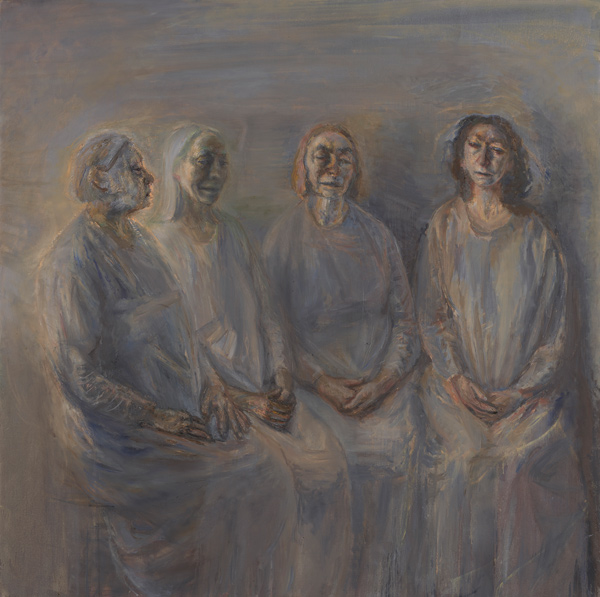Following her long intimacy with one of England’s most renowned modern artists, you might expect to see Lucian Freud’s influence in Celia Paul’s work.
But Paul “forged her own path,” says European Art Curator Catherine Hess. Seven of Paul’s works, rarely exhibited in the United States, are now showing at the Huntington. The exhibit is authored and curated by Pulitzer Prize-winning American critic Hilton Als.
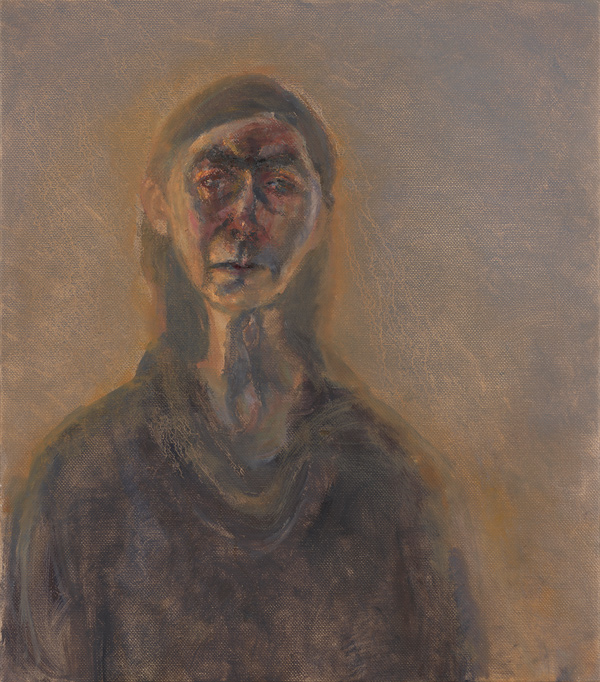
Celia Paul, Self-Portrait, March (2017). Oil on canvas, 24 7/8 x 22 3/8 inches. © Celia Paul. Courtesy of the artist and Victoria Miro, London / Venice.
Born in India in 1959, Paul soon moved to England with her four sisters and grew up in an Anglican clerical household. She early showed artistic skills as she drew and painted elderly people. Admitted at 16 to England’s famous Slade School, she became a model and mothered a son of her famous professor Freud. (His picture of her, “Girl in a Striped Nightshirt,” now hangs in the Tate.)
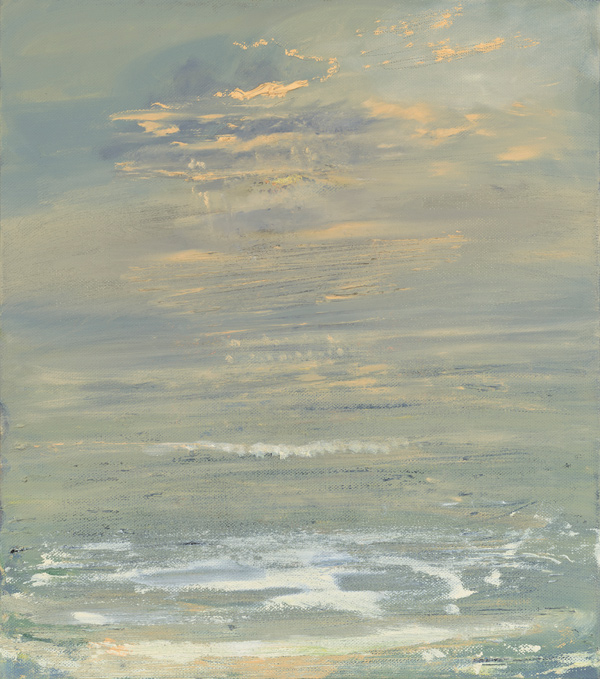
Celia Paul, Clouds and Foam (2017). Oil on canvas, 25 x 22 3/8 inches. © Celia Paul. Courtesy of the artist and Victoria Miro, London / Venice.
But as Hess affirms, Freud is not an influence on Paul, who concentrates on portraits and landscapes. Her work sometimes seems influenced by that of classic painters such J. M. W. Turner and John Constable, Hess suggests. Paul was also influenced by the work of Gwen John, whose own relationship with Rodin somewhat resembled Paul’s to Lucian Freud.
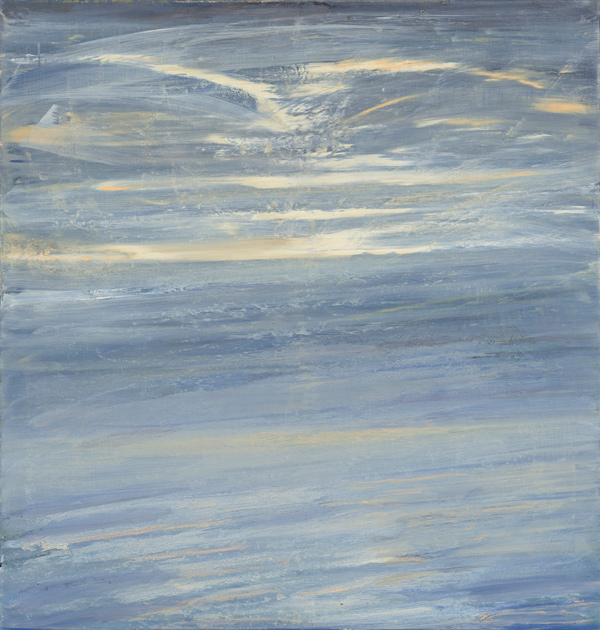
Celia Paul, View from The Tower (2017). Oil on canvas, 42 3/4 x 39 7/8 inches. © Celia Paul. Courtesy the artist and Victoria Miro, London/Venice.
Paul’s work is deeply personal, psychological and poetic. The most subjective, even spiritual, of her works at the Huntington is “My Four Sisters in Mourning,” painted just 5 months after her mother’s 2015 death. The sisters seem sealed in their grief, their broad mouths tightly closed, their seated bodies wracked with the tension of loss and nestled in dimensionless gray cloud. But from the left comes a pearly radiance of pale amber, yellow and red, perhaps signaling a token of hope, contrasting to their sorrow and loss.
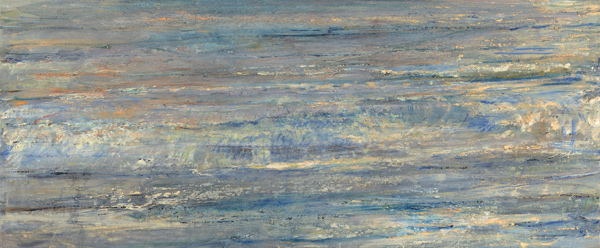
Celia Paul, Shoreline (2015–16). Oil on canvas, 24 1/4 x 58 inches. © Celia Paul. Courtesy of the artist and Victoria Miro, London / Venice.
Since her mother’s death, Paul has also been producing imaginary seascapes, informed by her occasional residences on the Southwest and Eastern coasts of England. She’s wondered if something of her mother doesn’t survive in the broad reaches of the ocean. Interestingly, the colors that brighten “Mourning” also animate the crests of her ocean waves.
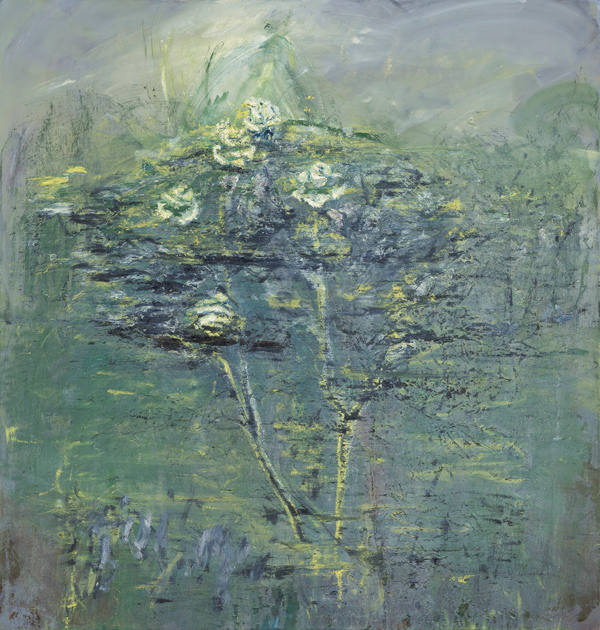
Celia Paul, Rosebush, Magdalene Garden (2017). Oil on canvas, 42 1/8 x 40 1/4 inches. © Celia Paul. Courtesy of the artist and Victoria Miro, London / Venice.
The most recent picture in the show suggests a slight brightening of Paul’s attitude. “The Bronte Parsonage” is the famous Yorkshire homestead of Charlotte Bronte and her notoriously troubled siblings. It stands in verdant, glorious sunshine, falling with all the radiance of high noon.
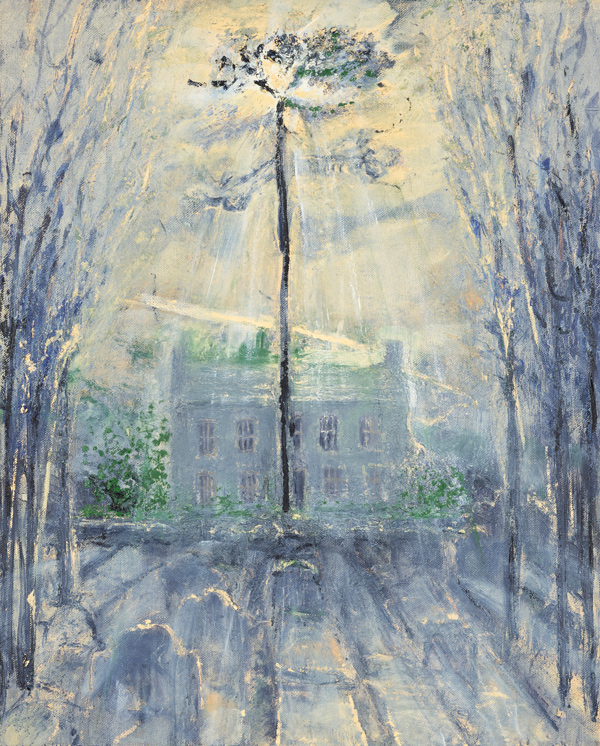
Celia Paul, The Brontë Parsonage (with Charlotte’s Pine and Emily’s Path to the Moors) (2017). Oil on canvas, 36 1/8 x 29 1/4 inches. © Celia Paul. Courtesy of the artist and Victoria Miro, London / Venice.
But the painting also includes, at its bottom, the tombstones of the parsonage’s tumbled graveyard—a reminder of life’s inevitable end.
Celia Paul, February 9 – July 8, 2019, at The Huntington, 1151 Oxford Road, San Marino, CA 91108. www.huntington.org

